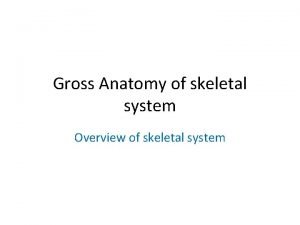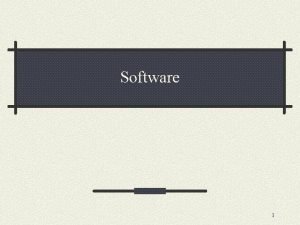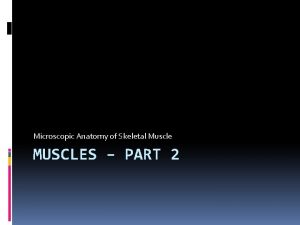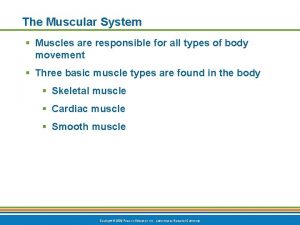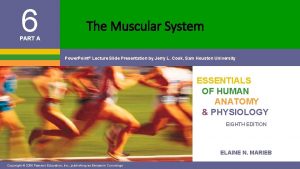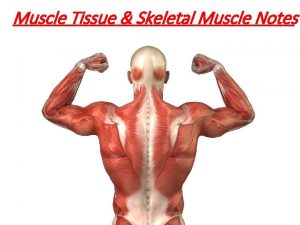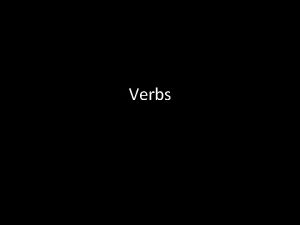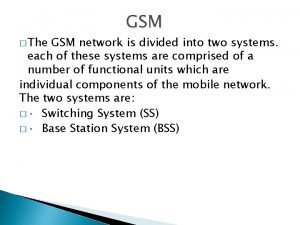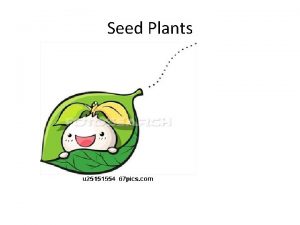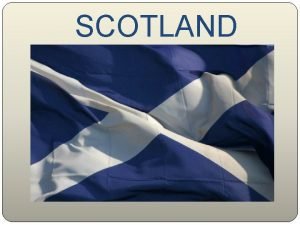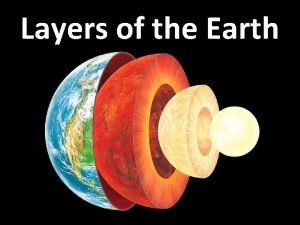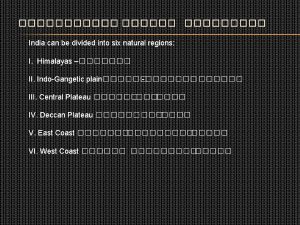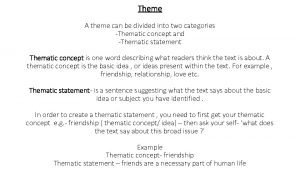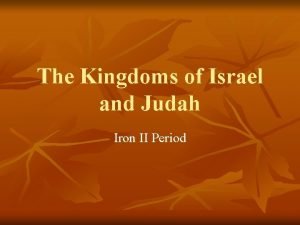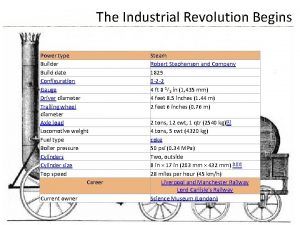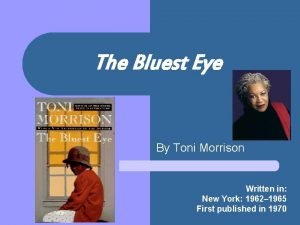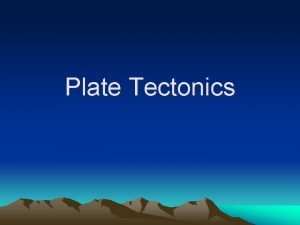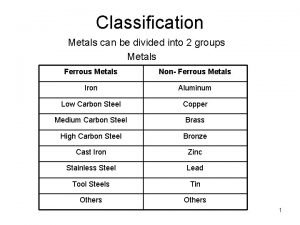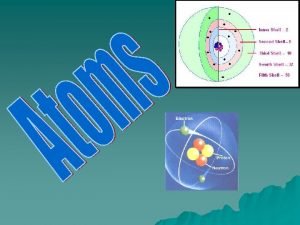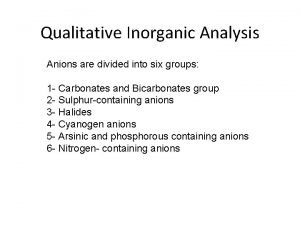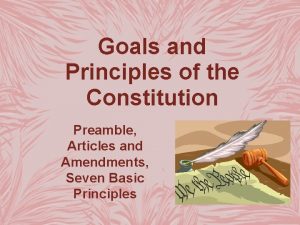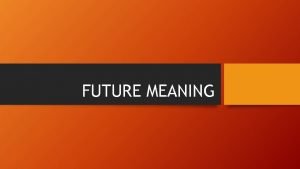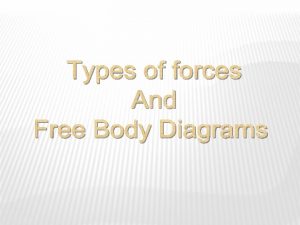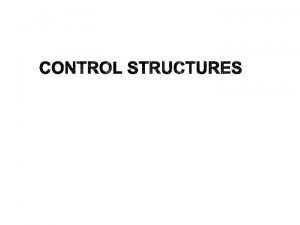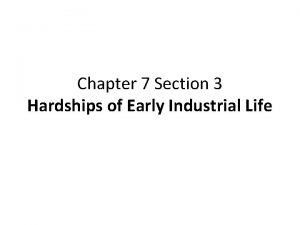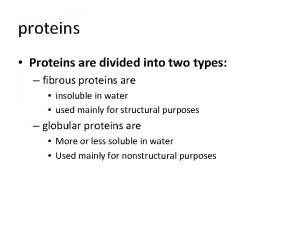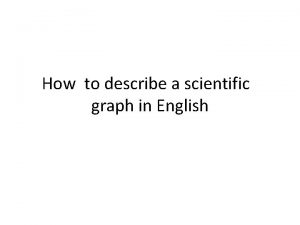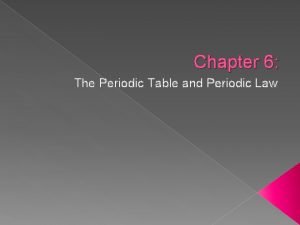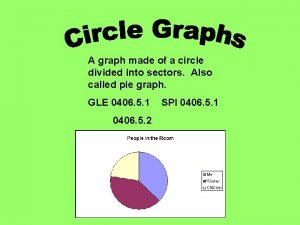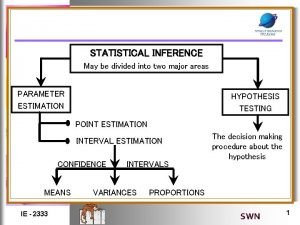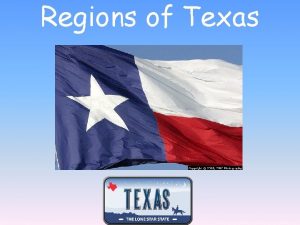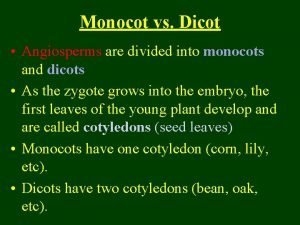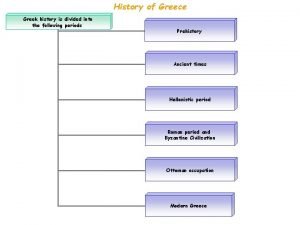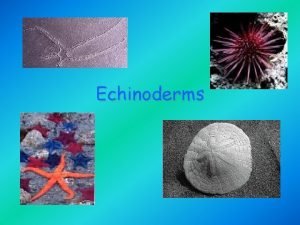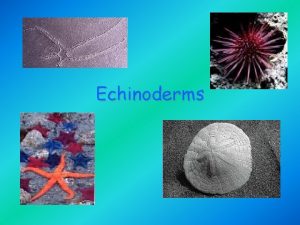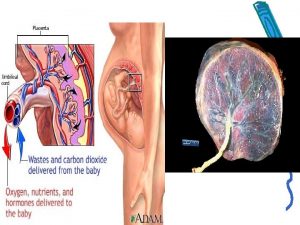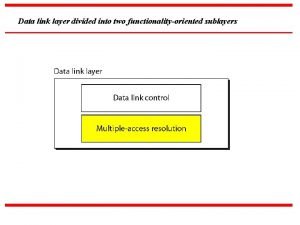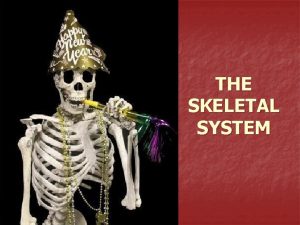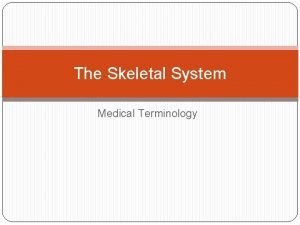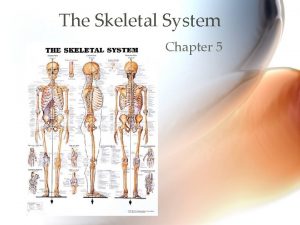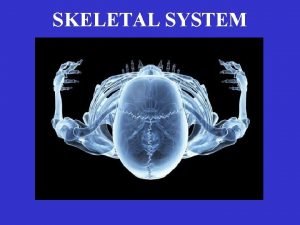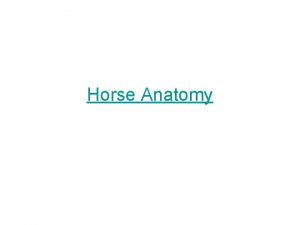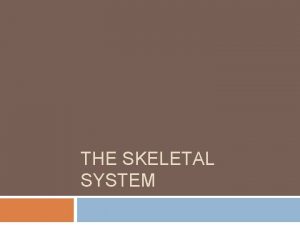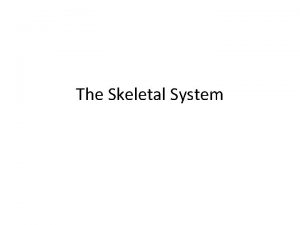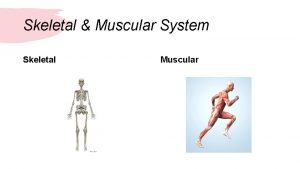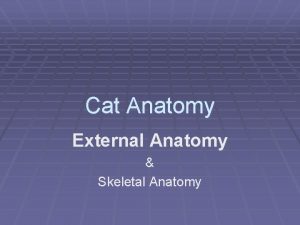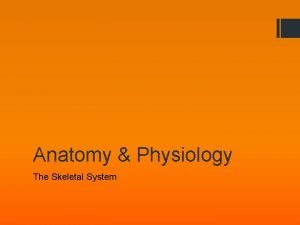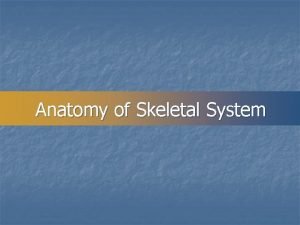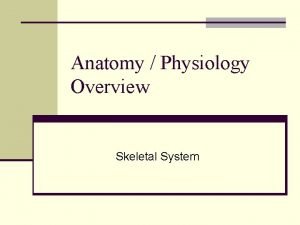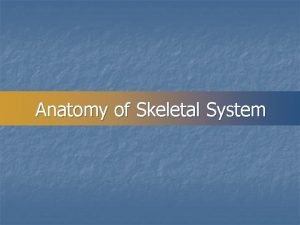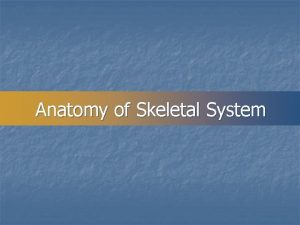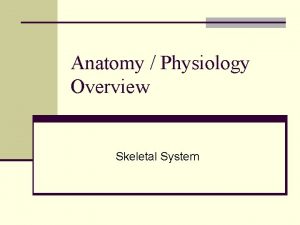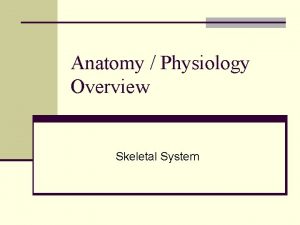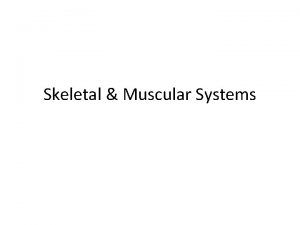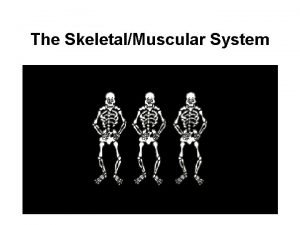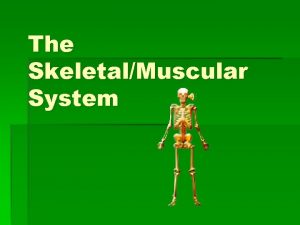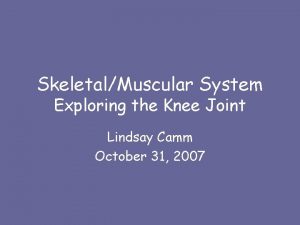Anatomy SkeletalMuscular System The Skeletal System divided into

























































- Slides: 57

Anatomy Skeletal/Muscular System

The Skeletal System: divided into two groups, the axial and appendicular skeleton for a total of 206 bones in the body. I. The Axial Skeleton: consists of 80 bones that revolve around the vertical axis of the skeleton. *skull, ribs, sternum and vertebral column

A. Bones of the Axial Skeleton 1. The Skull A. Cranial bones (8): *frontal (1) *parietal (2) *temporal (2) *sphenoid (1) *ethmoid (1) *occipital (1) http: //www. learnbones. com

A. Bones of the Axial Skeleton B. Facial Bones (14): *mandible (1) *maxilla (2) *zygomatic bone (2) *nasal bone (2) *lacrimal (2) *palatine (2 *inferior nasal concha (2) *volmer (1)

A. Bones of the Axial Skeleton 2. Thoracic cage (25): *sternum (1) *true ribs (14) articulate with the sternum directly. *false ribs (6) *floating ribs (4)

A. Bones of the Axial Skeleton 3. Vertebral Column (26): *cervical vertebrae (7) *thoracic vertebrae (12) *lumbar vertebrae (5) *sacrum (5 fused) *coccyx (4 fused)

II. The Appendicular Skeleton: consists of 126 bones that append to the axial skeleton. A. Bones of the Appendicular Skeleton 1. Pectoral girdle (4) *clavicle (2) *scapula (2)

A. Bones of the Appendicular Skeleton 2. The Upper Limb (60) *humerus (2) *radius (2) *ulna (2) *carpals (16) *metacarpals (10) *phalanges (28)

A. Bones of the Appendicular Skeleton 3. Pelvic Girdle (2) 3 fused pairs *ilium *ischium *pubis

A. Bones of the Appendicular Skeleton 4. Lower limb (60) *femur (2) *patella (2) *tibia (2) *fibula (2) *tarsal (14) *metatarsals (10) *phalanges (28)

III. Functions of the Skeletal System A. Axial Skeleton Functions: *protects the brain/heart/lungs/spi nal cord and digestive organs. *provides structure and support for upright position *transfers weight to lower extremities

III. Functions of the Skeletal System B. Appendicular Skeleton Functions: *protection of digestive/excretive and repro. organs *attachment of ligament and muscles allowing movement *blood cell formation

IV. Types of Bones 1. Long Bones: those that are longer than they are wide. *femur, tibia, fibula *humerus, radius, ulna *clavicle *metacarpals *metatarsals *phalanges

2. Short Bones: are as wide as they are long. *tarsals of the foot *carpals of the hand

3. Flat Bones: broad flat plates used for protection and muscular attachment. Most RBC’s are produce in flat bones. *skull *rib cage *sternum *scapula *pelvis *os coxae (hip bone)

4. Irregular Bones: have peculiar shapes and cannot be grouped in the other bone categories. *verterbrae *sacrum *coccyx *mandible *maxilla *hyoid

long bone structure

V. Anatomical Terminology

V. Anatomical Terminology 1. Anterior: towards the front. 2. Posterior: towards the back. 3. Superior: towards the head. 4. Inferior: towards the feet. 5. Proximal: nearest; closer to any point of reference. 6. Distal: remote; farther from any point of reference. 7. Lateral: point that is more distant from the median plane. 8. Medial: point that is closer to the median plane

VI. Connective Tissue 1. Cartilage: a flexible connective tissue found between the bones of joints. It acts as a cushion between joints and reduces friction in movement.

VI. Connective Tissue 2. Ligament: dense, flexible tissue that connects bone to bone at a joint.

VI. Connective Tissue 3. Tendon: consists of dense collagen fibers and connect muscle to bone.

VII. Joint: point where two or more bones articulate allowing movement and mechanical support. A. Types of Joints 1. Fibrous: held together by fibrous connective tissue. Usually immovable or slightly moveable. Ex. Suture joints between cranial bones and distal joint of tibia and fibula.

2. Cartilaginous: joints held together by cartilage. May be immovable or slightly movable.

3. Synovial: freely movable joints characterized by a synovial cavity (joint cavity) containing synovial fluid. Features of Synovial Joints: a. Articular cartilage: (hyaline cartilage) covers the ends of bones. b. Synovial membrane: surrounds the synovial cavity and secretes synovial fluid.

c. Articular Capsule: is composed of the synovial membrane and the fibrous capsule. d. Bursae: fluid filled sac that cushions and reduces friction between moving structures. e. Meniscus: disperses the weight of the body, reduces friction and stabilizes the joint.



Types of Synovial joints 1. Hinge: allow flexion and extension along one plane. *elbow *knee *ankle *between phalangeal bones.

Types of Synovial joints 2. Ball and Socket: allow all movements except gliding. *hip *shoulder

Types of Synovial joints 3. Condyloid: allow flexion, extension, abduction, adduction and circumduction. *wrist (radius and carpals) *between the metacarpals and phalanges.

Types of Synovial joints 4. Pivot: one bone rotates about another. *the neck *radius and ulna

Types of Synovial joints 5. Gliding: permits slight sliding and gliding movements. *spine *wrist *ankles *clavicle

Types of Synovial joints 6. Saddle: same movement as condyloid joints. *thumb

The Muscular System I. Characteristics of muscle tissue *contractibility-ability of the muscle to shorten. *extensibility: ability of the muscle to lengthen. *elasticity: ability of the muscle to return to its normal size.

I. Characteristics of muscle tissue * atrophy-a decrease in the size of muscle tissue. * hypertrophy-an increase in the size of muscle tissue. * Controlled by nerve tissue and fed by capillaries.

II. Types of Muscle Tissue A. Smooth: Involuntary muscle that lines the walls of hollow organs, blood vessels and the digestive tract.

II. Types of Muscle Tissue B. Cardiac: involuntary striated muscle responsible for rhythmic contractions of the heart.

II. Types of Muscle Tissue C. Skeletal: Voluntary striated muscle that is responsible for movement.

III. Structure of Skeletal Muscle

III. Structure of Skeletal Muscle

IV. Muscle Attachment 1. Origin: the point of attachment of a muscle tendon to a stationary bone. 2. Insertion: point of attachment of a muscle tendon to a movable bone.

Muscles of the anterior portion of the body Deltoid http: //www. getbodysmart. com/

Pectoralis

iliopsoas

Sartorius

Quadriceps femoris


Tibialis anterior

Abdominus rectus and External obliques

Biceps brachii

Muscles of the posterior portion of the body

Triceps brachii

Gluteus maximus

Hamstrings

Gastrocnemius and Soleus

Erector spinae
 Gross anatomy of skeletal system
Gross anatomy of skeletal system Anterior surface of scapula
Anterior surface of scapula Computer software can be divided into
Computer software can be divided into Microscopic anatomy of skeletal muscle
Microscopic anatomy of skeletal muscle Microscopic anatomy of skeletal muscle figure 6-2
Microscopic anatomy of skeletal muscle figure 6-2 Microscopic anatomy of skeletal muscle figure 6-2
Microscopic anatomy of skeletal muscle figure 6-2 Microscopic anatomy of skeletal muscle figure 6-2
Microscopic anatomy of skeletal muscle figure 6-2 Anatomy of skeletal muscle
Anatomy of skeletal muscle Infinitives latin
Infinitives latin Mobile services switching center
Mobile services switching center Seed plant are divided into
Seed plant are divided into Into what parts is scotland divided geographically
Into what parts is scotland divided geographically What are the 3 layers of earth
What are the 3 layers of earth India can be divided into natural regions
India can be divided into natural regions Aca student liability insurance
Aca student liability insurance Divided by two theme
Divided by two theme Kingdoms of israel and judah
Kingdoms of israel and judah Enclosure movement definition industrial revolution
Enclosure movement definition industrial revolution The bluest eye setting
The bluest eye setting The lithosphere is divided into
The lithosphere is divided into Paris is divided into 20 arrondissements
Paris is divided into 20 arrondissements Nutrients are divided into how many classes
Nutrients are divided into how many classes Classification of metal
Classification of metal Israel divided into two kingdoms
Israel divided into two kingdoms Smallest particle of an element
Smallest particle of an element Analysis of anions
Analysis of anions The constitution is divided into 7 sections called
The constitution is divided into 7 sections called William wordsworth is known as a
William wordsworth is known as a Divided into two types
Divided into two types Divided into three parts
Divided into three parts Multistory buildings divided into crowded apartments.
Multistory buildings divided into crowded apartments. The divine comedy summary
The divine comedy summary Proteins are divided into two groups
Proteins are divided into two groups Monophasic liquid dosage form definition
Monophasic liquid dosage form definition Pie chart is divided into
Pie chart is divided into What are the two groups of forces
What are the two groups of forces Egyptian history is divided into
Egyptian history is divided into A cricket match is divided into periods called
A cricket match is divided into periods called Periodic table divided into blocks
Periodic table divided into blocks Circular graph divided into sectors
Circular graph divided into sectors Hemiglossia
Hemiglossia Statistical inference is divided into
Statistical inference is divided into How many regions are in texas?
How many regions are in texas? Poems with many lines are divided into
Poems with many lines are divided into Ranunculus monocot or dicot
Ranunculus monocot or dicot Helicotrima
Helicotrima History is divided into
History is divided into Echinoderms spiny skin
Echinoderms spiny skin Taxonomists have divided echinoderms into classes
Taxonomists have divided echinoderms into classes Can be divided into
Can be divided into Divided into three categories
Divided into three categories Resources are divided into
Resources are divided into Data link sublayers
Data link sublayers A typical programming tasks can be divided into two phases
A typical programming tasks can be divided into two phases Substantive vs procedural due process
Substantive vs procedural due process 5 main functions of the skeleton
5 main functions of the skeleton Medical terminology skeletal system
Medical terminology skeletal system Skeletal system
Skeletal system
